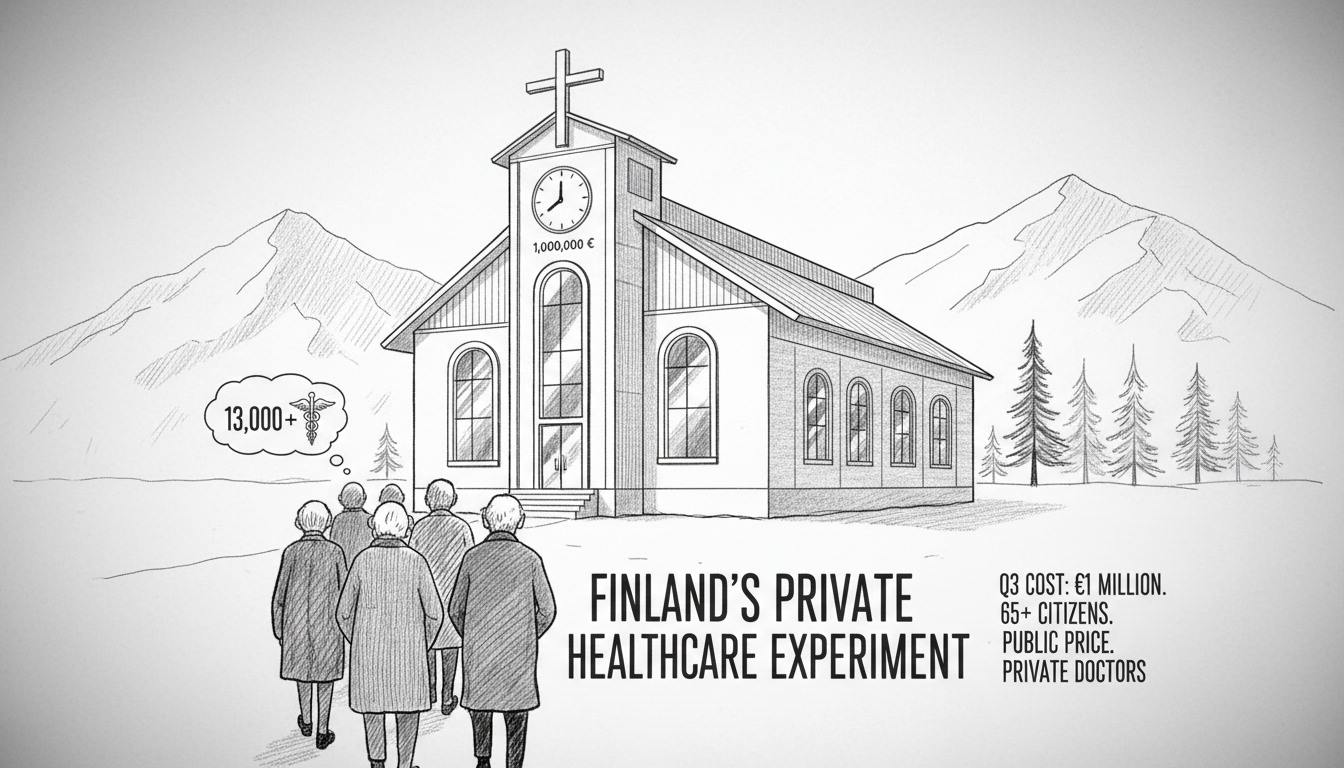Finland's Social Insurance Institution paid over one million euros for doctor visits and medical examinations in October. These payments were part of a new healthcare choice experiment for citizens aged 65 and older.
The pilot program covered approximately 13,000 participants. This represents about one percent of Finland's population in this age group.
Total costs for the experiment reached 1.5 million euros in October alone. The average cost per doctor visit was 118 euros, including consultation fees and examinations. Patients paid an average deductible of 37 euros per visit.
Central Finland welfare region showed the highest participation rates. There, 1.7 percent of eligible seniors used the program in October. Åland Islands and Central Ostrobothnia recorded the lowest participation numbers.
Nearly all reimbursements covered visits to general practitioners at physical clinics. Services were provided at approximately 170 locations across Finland. Some 744 doctors participated in delivering these services.
The two-year trial began in September. It allows seniors to access private general practitioner services at public healthcare prices. This initiative aims to improve primary healthcare availability while reducing pressure on public systems.
Prime Minister Petteri Orpo's government program drives this experiment. The coalition committed to enhancing primary care accessibility during their term.
Payment statistics reveal interesting patterns. Kela processes reimbursements by payment month rather than service date. About 70 percent of October payments actually covered September medical visits.
This experiment represents Finland's ongoing struggle with healthcare accessibility. Like other Nordic countries, Finland faces demographic challenges with aging populations. The system must adapt to increasing demand for senior healthcare services.
The pilot program testing private sector integration reflects broader European trends. Many countries are exploring mixed healthcare models to maintain quality while controlling costs. Finland's approach carefully balances public healthcare principles with practical solutions.
International observers watch this experiment closely. Successful implementation could influence healthcare policy across the Nordic region. The program's cost-effectiveness and patient satisfaction metrics will be crucial for future decisions.
Senior citizens gain more flexibility in choosing healthcare providers. They can access private services without bearing full costs. This addresses common complaints about long waiting times in public systems.
The experiment's regional variation raises questions about implementation. Why do some areas embrace the program more than others? Local healthcare infrastructure and information campaigns likely play important roles.
Future expansion depends on demonstrated success. If the program shows improved access without excessive costs, broader implementation may follow. Other age groups could eventually benefit from similar arrangements.
Healthcare professionals also face adaptation. Private practitioners must navigate new payment systems and reporting requirements. Public sector workers may see reduced pressure if the program successfully diverts patients.
The coming months will reveal whether this approach delivers on its promises. Both cost control and patient satisfaction need careful monitoring. Finland's experiment could become a model for other nations facing similar healthcare challenges.

